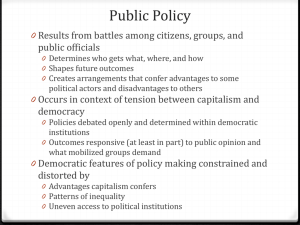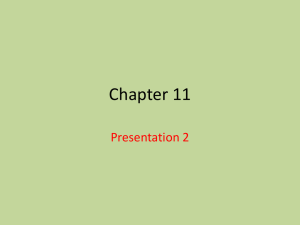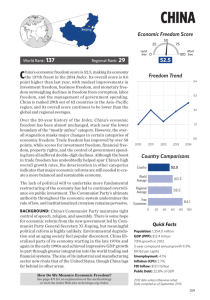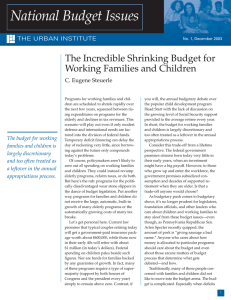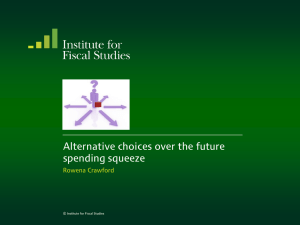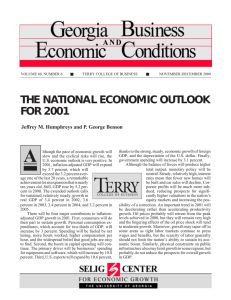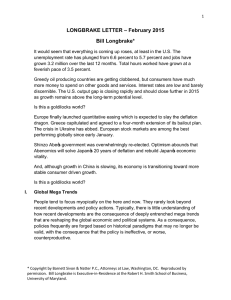economic policy brief
advertisement
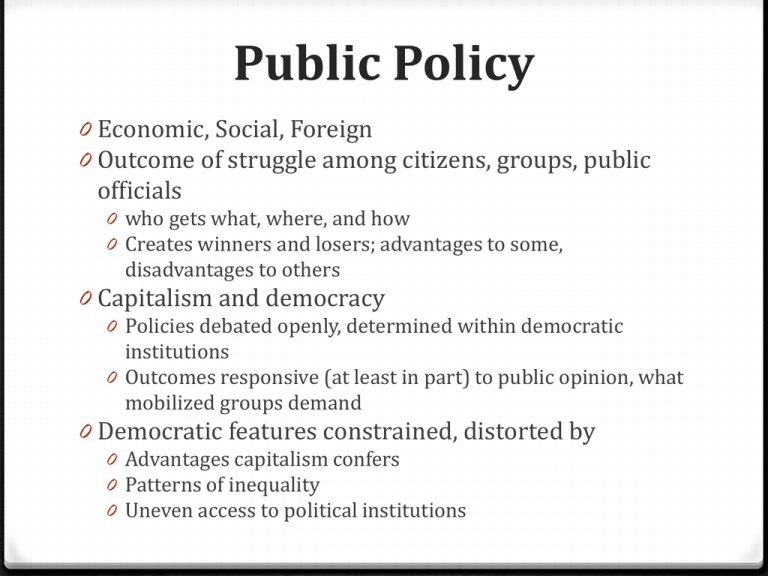
Public Policy 0 Economic, Social, Foreign 0 Outcome of struggle among citizens, groups, public officials 0 who gets what, where, and how 0 Creates winners and losers; advantages to some, disadvantages to others 0 Capitalism and democracy 0 Policies debated openly, determined within democratic institutions 0 Outcomes responsive (at least in part) to public opinion, what mobilized groups demand 0 Democratic features constrained, distorted by 0 Advantages capitalism confers 0 Patterns of inequality 0 Uneven access to political institutions Economic Policy 0 Fiscal, Monetary, and Regulatory 0 Gross Domestic Product (GDP) = total goods and services produced 0 Government has grown since 1950s (Table 9.1) 0 increasing activities of government (social welfare and defense) 0 Small in comparison 0 0 0 0 Tax burden light: lower % of GDP in form of taxes (Figure 9.1) Spends less as % of GDP (Figure 9.2) Leaner benefits, fewer public services Small public sector employment 0 Government lacks power to manage economy, significantly influence behavior of private firms 0 Corporate managers enjoy greater autonomy 0 Firms subject to fewer government regulations Fiscal Policy 0 Manipulation of total government revenue and spending to manage overall demand 0 Budget deficits stimulate economy (unemployment) 0 Budget surpluses restrain economy (inflation) 0 Budget also establishes priorities, values of government 0 Determines winners and losers; distributes costs and benefits 0 Reveals relationships of power 0 Budget process involves partisan, institutional, and interest group conflict 0 Starts with President and goes to Congress (budget committees) 0 Appropriations bills emerge and are sent to President Taxes 0 Receipts rose (1983-2000, 20% GDP) 0 Bush’s tax cuts reversed trend (16.5% by 2003) 0 Decline in revenue, rising federal deficits debt payments strain government’s ability to provide services 0 Federal government (Table 9.2) 0 Corporate income taxes declined (loopholes, credits, accounting gimmicks, shelters); supposed to be 35% (not 20%) 0 Excise taxes (alcohol, cigarettes, gas) down 0 Social Security payroll taxes up 0 Progressive or Regressive? 0 Regressive (Figure 9.3): tax burden roughly same for all income groups 0 Incentives through exemptions, rebates, deductions (mortgage interest; depreciation for equipment; IRAs) 0 Tax expenditures = public subsidies through favored tax treatment; “subterranean politics” complex tax code Spending 0 Groups struggle over how much should be spent and on what 0 Government expenditures have increased (1950, 15.6% of GDP; 2008, 21%) 0 Government does more (Social Security; Medicare/Medicaid; EPA; other functions) 0 Federal outlays for defense and welfare (Table 9.3) 0 Welfare state expenses account for 63.6% of all spending (2008) 0 Welfare and warfare account for 93% of all outlays 0 All other tasks get remaining 7% 0 2/3 of all government spending mandatory (debt, entitlement programs (e.g., Social Security, food stamps, Medicare)) 0 1/3 discretionary spending (jurisdiction of Appropriations Committees) 0 Largest is defense (1/2 of all discretionary spending) Monetary Policy 0 Manipulation of interest rates 0 High rates slow economy; low rates encourage borrowing, spending 0 Controlled by Federal Reserve Board (FED) 0 Interest rate banks pay to borrow money (low rates increase money supply) 0 Buys and sells government bonds (puts more money into circulation) 0 Sets reserve rate banks must hold on deposits (higher rates decrease money supply) 0 FED (created in 1913) substantial autonomy (independent from Congress and President) insulates monetary policy from democratic control 0 Subject to capture by banks representatives in policymaking bodies; mobilization of bias (what is good for banks is good for economy) Regulation 0 Authorized by Congress, bureaucracy sets rules firms must follow 0 U.S. has comparatively low level of government regulation 0 Government regulation necessary markets not self-regulating; will not protect public interest and social values 0 Progressive and New Deal Eras (first wave) popular pressure regulation for specific industries 0 Interstate Commerce Commission (1887); Federal Trade Commission (1914); Food and Drug Administration (1931); Securities and Exchange Commission (1934) 0 Second wave (1960s) social regulation across industries 0 Civil rights agencies; Environmental Protection Agency (1970); Occupational Safety and Health Administration (1970); Consumer Products Safety Commission (1972) 0 Business counteroffensive calling for “regulatory reform” (1970s) 0 Ongoing conflict over standards, enforcement, and industry capture
